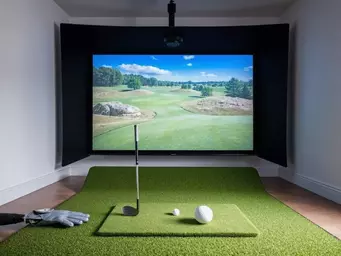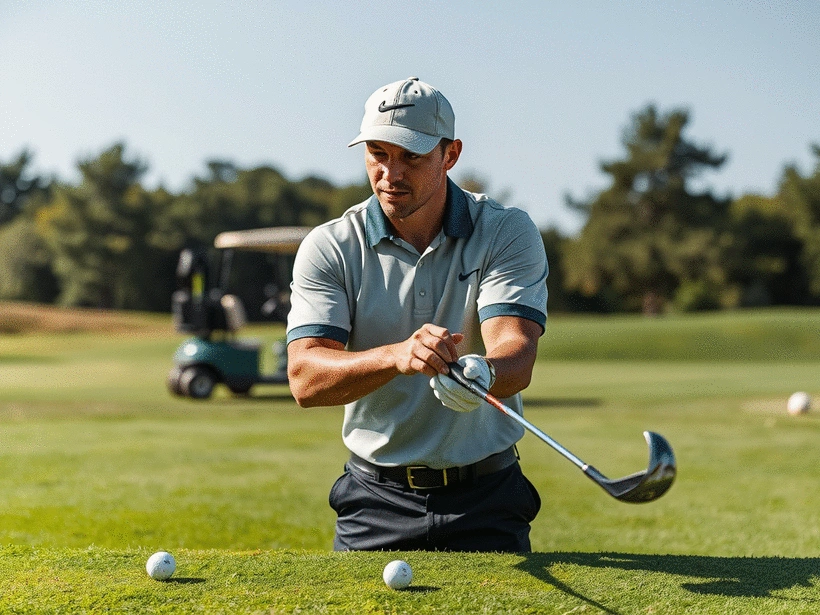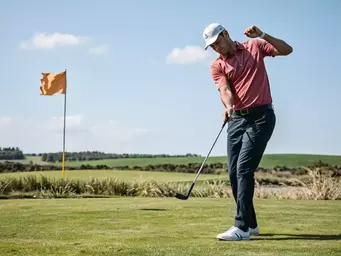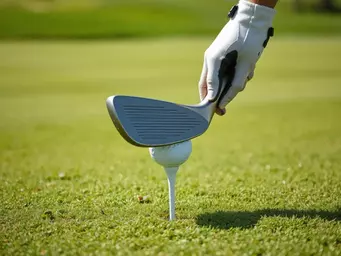Mastering the Golf Backswing Basics

What if the key to a powerful golf swing lies in the first movement you make? The backswing is more than just a preparatory step; it's the foundation of your entire shot. Understanding its mechanics can unlock your true potential on the course.
What You Will Learn
- The importance of the backswing in establishing the foundation for a successful golf swing.
- Key terms such as rotation, hinge, and setup, and their roles in enhancing your swing technique.
- The significance of clubhead positioning during the backswing for maintaining rhythm and power.
- Essential components of a solid backswing including body rotation, wrist hinge mechanics, and balance.
- How to set specific goals and seek feedback to continually improve your backswing and overall game.
- The impact of fitness training on swing performance, emphasizing core strength and flexibility.
Key Components of an Effective Golf Backswing
The backswing is fundamental to a powerful and accurate golf shot. Below, we highlight its essential components and their roles in refining your technique.
Proper Body Rotation
Engage shoulders and hips for a full, balanced turn, generating power for the downswing.
Wrist Hinge Mechanics
Correctly timing your wrist hinge stores energy, contributing significantly to swing power.
Clubhead Positioning
Maintaining the correct clubhead path ensures a smooth transition and improved accuracy.
Balance and Posture
Stability throughout the backswing is key for better performance and consistent shots.
Understanding Backswing Basics: The Foundation of Your Golf Swing
When it comes to golf, the backswing is like the opening chapter of a great story. It sets the stage for everything that follows, impacting your swing's power and accuracy. I often tell my readers that mastering the backswing is crucial because it creates the necessary momentum and alignment for a successful shot. Whether you're a seasoned player or just starting, understanding these fundamentals will enhance your game.
The backswing isn't just about lifting the club; it's about preparing your body and mind for the shot ahead. It’s fascinating how many golfers underestimate its importance! A well-executed backswing can lead to a more consistent and powerful follow-through, making it a vital area to focus on in your practice sessions.
What is the Backswing and Why is it Important?
The backswing refers to the initial phase of your swing, where you bring the club back away from the ball. It's the foundation that dictates your motion and impact. Without a proper backswing, your overall swing can suffer tremendously. Think of it as winding up a toy before letting it go—if you skip that step, nothing happens!
- Establishes a solid foundation for your swing.
- Creates tension and energy, which you can release during the downswing.
- Helps with alignment and accuracy to the target.
By focusing on the backswing, you're giving yourself the best chance to execute a successful shot. It’s all about building the right habits to improve your performance on the course. For a deeper dive into the biomechanics that govern a modern golf swing, you can explore resources like this article on biomechanical analysis, which offers advanced insights.
Defining Key Terms: Rotation, Hinge, and Setup
To fully understand the backswing, it's essential to grasp a few key terms: rotation, hinge, and setup. Each plays a significant role in how effective your backswing will be. Rotation involves the twisting movement of your upper body, which is crucial for generating power. Hinge refers to the angle formed between your wrists and forearms, while setup is your initial stance and grip on the club.
- Rotation: Engaging your core and shoulders for a powerful turn.
- Hinge: Creating the proper wrist angle to store energy.
- Setup: Positioning yourself correctly to start your swing.
Understanding these concepts not only enhances your technique but also boosts your confidence. With the right setup, rotation, and hinge, you're well on your way to mastering your backswing! For more comprehensive guidance on improving your golf swing sequence, including tips and techniques for success, consider reviewing Keiser University's College of Golf resources.
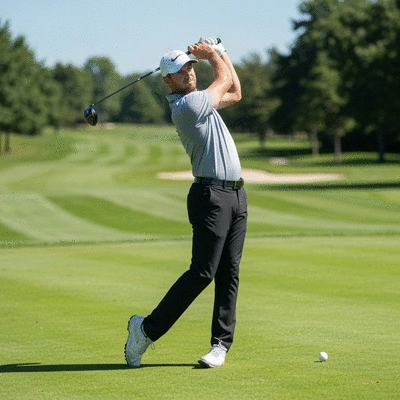
Exploring the Role of Clubhead Positioning in Your Backswing
The position of your clubhead throughout the backswing is critical. It affects the angle and power of your shot. Ideally, you want your clubhead to remain low during the initial part of the backswing before transitioning upward. This positioning helps in maintaining a smooth motion and allows for a more powerful downswing.
- Keep the clubhead low to the ground for better rhythm.
- Aim for a straight path back to prevent slicing or hooking.
- Visualize where you want the clubhead to be at the top of your backswing.
Paying attention to your clubhead position not only enhances your shot but also contributes to a more consistent swing. Remember, every successful golfer pays close attention to these small details!
Pro Tip
To elevate your backswing, focus on the tempo of your movement. A slow, controlled backswing can enhance your overall swing mechanics and lead to greater accuracy. Remember, it’s not just about speed; it’s about timing and rhythm!
Frequently Asked Questions About the Golf Backswing
What is the backswing in golf?
The backswing is the initial phase of a golf swing where the club is moved away from the ball, preparing the body and club for the downswing and impact. It builds momentum and sets the alignment for the shot.
Why is a proper backswing important?
A proper backswing is crucial because it establishes the foundation for your entire swing, creates tension and energy for the downswing, and aids in accurate alignment to the target. Without it, power and consistency suffer.
What are the key components of an effective backswing?
The essential components include proper body rotation (shoulders and hips), correct wrist hinge mechanics to store energy, appropriate clubhead positioning for a smooth path, and maintaining balance and posture throughout the movement.
How does fitness training impact backswing performance?
Fitness training, especially focusing on core strength, flexibility, and balance, significantly enhances backswing performance. It improves stability, power generation, range of motion, and helps prevent injuries, allowing for a more effective and consistent swing.
How can I improve my backswing?
To improve your backswing, set specific goals for each practice session, record your swings for self-analysis, seek feedback from coaches or experienced players, and incorporate fitness training to build strength and flexibility.
Reflecting on Backswing Essentials: Your Path to a Better Game
As we wrap up our exploration of backswing mechanics, it’s crucial to reflect on the key takeaways that can truly transform your game. A solid backswing is the foundation of an effective golf swing, impacting everything from distance to accuracy. Remember that your backswing sets the tone for your entire shot, so understanding its components is vital for your success on the course.
Here are the essential components of an effective backswing:
- Proper body rotation: Engage your shoulders and hips for a full, balanced turn.
- Wrist hinge mechanics: Timing your wrist hinge correctly can add power to your swing.
- Clubhead positioning: Keep your clubhead on the correct path to ensure a smooth transition to your downswing.
- Balance and posture: Maintaining stability throughout your backswing enables better performance.
Each of these elements plays a significant role in refining your technique, so take the time to practice and internalize them. As you continue to work on your backswing, remember that improvement comes with patience and persistence!

Encouragement to Practice: Take the Next Step
Now that you have a solid understanding of backswing essentials, it’s time to put that knowledge into action! Overcoming common challenges in your backswing can be tackled with dedication. Many golfers face issues like inconsistent shoulder turn or improper wrist hinge, but with targeted practice, you can conquer these hurdles.
Here’s how to approach overcoming these challenges:
- Set specific goals: Identify one aspect of your backswing to focus on each practice session.
- Record yourself: Use your phone to capture your swings, allowing you to self-analyze and make adjustments.
- Seek feedback: Don’t hesitate to ask a coach or experienced player for insights on your technique.
By following these steps, you’ll pave the way to a more effective backswing and an overall improved game. Remember, practice is where the magic happens—make it count!
Next Steps: Incorporating Feedback and Continuing Your Golf Journey
As you venture forward, it’s essential to stay open to feedback and continual improvement. Whether it’s from fellow golfers, instructors, or even your own observations, integrating constructive feedback can significantly accelerate your progress. Keep a journal of your experiences on the course and during practice to track your development and reflect on what works best for you.
Consider setting up regular check-ins with a coach or even utilizing swing analysis software to get deeper insights into your performance. This proactive approach not only enhances your skills but also keeps you motivated on your golfing journey!
Exploring Fitness Training and Flexibility for Improved Swing Performance
Lastly, let’s not forget the role of fitness training in optimizing your golf swing. A well-rounded fitness routine can enhance your strength, stability, and flexibility, all of which contribute significantly to your swing mechanics. Incorporating exercises that focus on core strength, flexibility, and balance will not only improve your performance but also help prevent injuries. For further insights into the connection between physical activity and golf performance, you can consult studies such as research on physical activity and golf club head speed.
To get started, consider these fitness components:
- Core workouts: Planks and rotational exercises will enhance your stability and power.
- Flexibility training: Incorporate yoga or dynamic stretches to maintain a full range of motion.
- Agility drills: Improve your balance and coordination with agility ladder drills or balance board exercises.
By focusing on your fitness in addition to your technique, you'll build a solid foundation that supports a powerful and effective golf swing. The journey to mastery is ongoing, so embrace every step along the way!
Recap of Key Points
Here is a quick recap of the important points discussed in the article:
- Master the Backswing: It sets the foundation for your swing, impacting power and accuracy.
- Key Components: Focus on proper body rotation, wrist hinge mechanics, and clubhead positioning for an effective backswing.
- Practice Goals: Set specific objectives in each practice session to tackle common challenges.
- Incorporate Feedback: Stay open to insights from coaches and peers to continually improve your technique.
- Enhance Fitness: Incorporate core workouts, flexibility training, and agility drills to optimize your swing mechanics.


